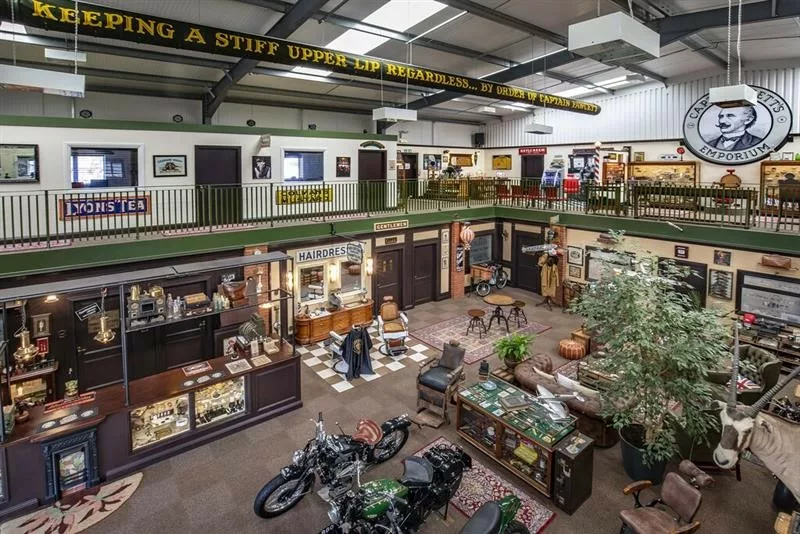
Captain Fawcett’s Marvellous Barbershop Museum
Step into another world at West Norfolk’s most curious small museum. Captain Fawcett’s Marvellous Barbershop Museum is a magnificent personal homage to the ancient craft of barbering. Believed to be the world’s largest collection of its kind, this extraordinary tonsorial treasury is as much a salutation to the age of explorers, when amateur collectors displayed finds in cabinets of curiosities known as ‘wonder rooms’. Often those who owned these salons of oddities and ephemera, acquired while adventuring across the world, were more showmen than scientists, recounting astounding tales by candlelight, accompanied by music and refreshments.
Richie Finney is just such a gentleman. After 25 years in the British film industry, he founded an incredible Gentleman’s Grooming Emporium in King’s Lynn where this remarkable museum is housed, showcasing exceptional antiques dating back to the 1650s, epitomising the art of functional design. Amid First World War artefacts, hand-crafted razors and Edwardian gentleman’s dressing cases, perhaps most intriguing is a 17th century cutthroat razor, its blade inscribed with poetry. Found hidden behind a drawer in an antique cupboard with other long-lost keepsakes, what story might it tell?
This brilliantly eccentric collection will delight anyone with a passion for barbering, fashion and history, including students of industrial design, writers, researchers, photographers and all people of wit and style.
Morning coffee (Captain Fawcett’s own!) and afternoon tea are available by prior arrangement, so radio ahead! You’ll also be able to sample and purchase the full award-wining range of ‘First Class Gentleman’s Grooming Requisites’.
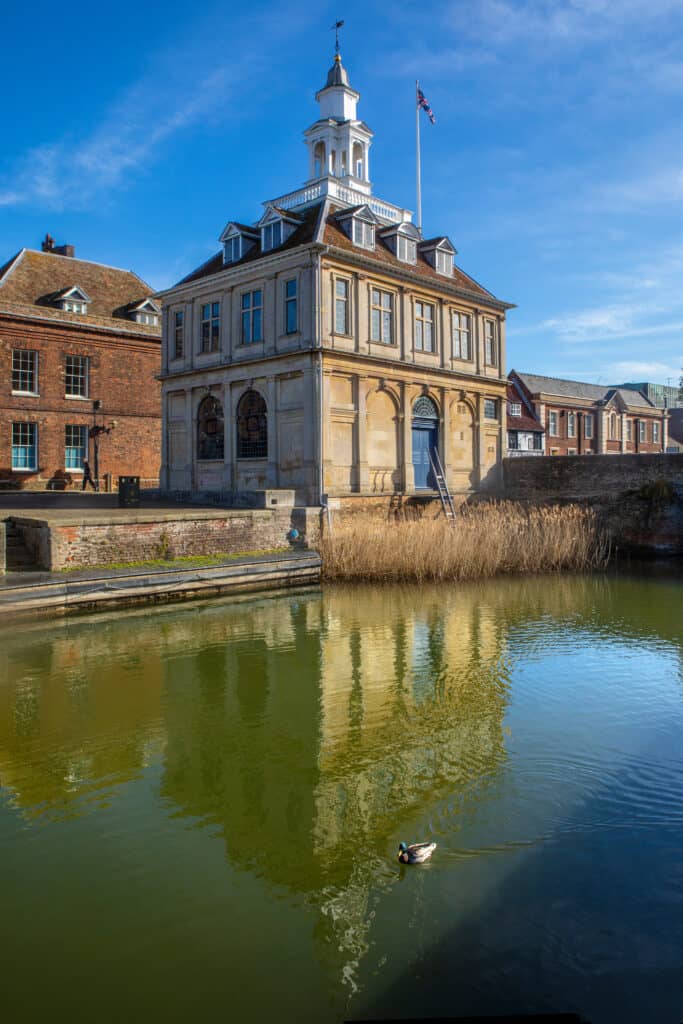
Lynn Museum and a Town Worth Its Salt
A long time ago the only currency worth its salt was…salt. Roman soldiers were paid in salt, and from that we get the word ‘salary’. And there’s plenty of salt sprinkled through the history of maritime King’s Lynn in West Norfolk. The town began with salt and the lucrative industry of extracting it from the shores of a now lost ‘linn’, a Celtic word for pool and the first name of the town. Salt was used to preserve meat and fish for long winters, a matter of survival. The salt business developed through the patronage of the Bishops of Norwich who laid the foundations of medieval Linn, or Bishop’s Lynn as was later called. When Henry VIII broke with Rome the town was renamed King’s Lynn.
Find out more at Lynn Museum, an architectural gem hidden in the corner of a busy bus station. Tucked into a former chapel, this small museum is packed with stories and an eclectic array of artefacts including Horace, a Tiger killed by a King, fairground gallopers made by engineer Frederick Savage and, most impressively, a haunting Bronze Age oak circle.
Seahenge, as it’s now known, was originally constructed on a lonely saltmarsh. Protected from the sea by sand dunes and mud flats, it became hidden beneath a layer of peat, which eventually covered the henge and prevented it from decay. Loaned to the British Museum as the centrepiece of its acclaimed Stonehenge exhibition, Seahenge’s purpose is shrouded in the mists of the past.

Stories of Lynn
Wife, mother and businesswoman. Sounds like an average Instagram bio. But Margery Kempe was no average woman. Born in King’s Lynn (then Bishop’s Lynn) around 1373 she was also a pilgrim, visionary and author of the earliest surviving autobiography in English. The Book of Margery Kempe recounts in vivid, candid detail the madness that followed giving birth to her first child when she was about 20, very likely the first recorded account of postpartum depression and psychosis. But this was the 14th century so hallucinatory encounters with devils, demons, the Virgin Mary and Christ were expressed through the lens of a fervently religious society and Margery felt called to the spiritual life. In 1413 she visited the anchoress and Christian mystic, Julian of Norwich, took a vow of chastity (after having 14 children) and then set off on a pilgrimage to Jerusalem, followed by a second to Santiago de Compostela. A courageous, unorthodox woman, she was often accused of heresy yet refuted all false charges against her armed with an extraordinary knowledge of theology. All the more remarkable for a woman who dictated her extraordinary memoir, being unable to read or write.
Find out more about Margery at the fascinating Stories of Lynn Museum. Also on display are town treasures such as the beautiful King John Cup, a 14th-century drinking vessel, lavishly decorated in gilt and enamel, a very rare example of a secular medieval cup.
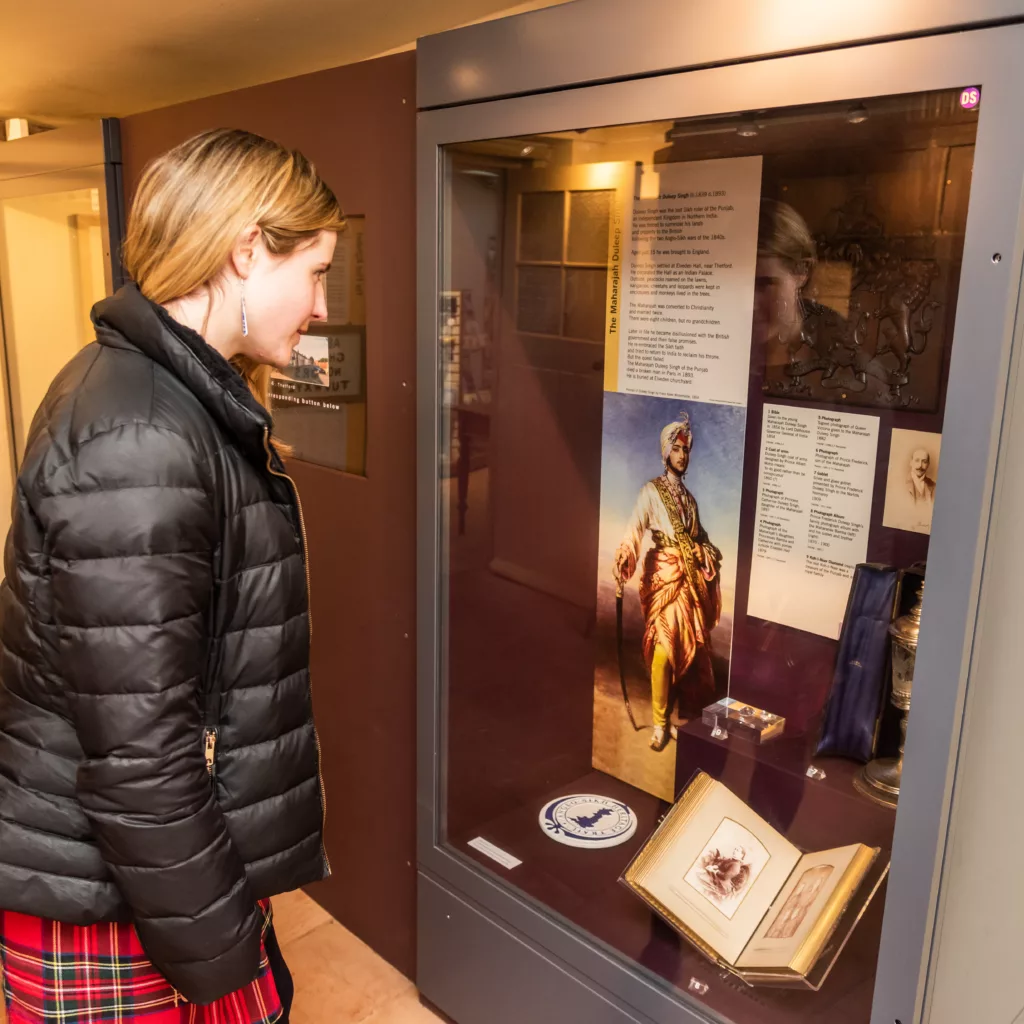
Thetford Ancient House
There are many magnificent stately homes in Norfolk but the charming Ancient House Museum in Thetford gives a unique glimpse into the history of middle class life. The early Tudor town house is one of the best examples in East Anglia. Its origins are uncertain but when the house was given as a gift to the town by Prince Frederick Duleep Singh in 1921, a conveyance mentions it was erected in the reign of Edward IV (1461-83). Probably commissioned by a wealthy merchant, it’s likely the house was originally detached, albeit constrained by the modest size of the plot.
Unlike in dramas like ‘Downton Abbey’, it was common for this kind of household, including servants, to sit down and eat together. The comfortable interior, with beautifully carved timbers, immediately captures the imagination. The Museum examines the lives of various people who lived in this building; an innkeeper, a plumber, a watchmaker and a museum caretaker. The 1901 population census tells us Thomas Newton, a rabbit warrener, was living here with his wife Emily, their family and four lodgers. If you love The Museum of the Home in London’s Shoreditch, Thetford’s Ancient House is a must-see.
Nearby there’s more history to discover. In 1737 political philosopher Thomas Paine was born 100 metres away. A passionate supporter of American and European revolutionary causes, he wrote hugely influential pamphlets including Common Sense, Age of Reason and the Rights of Man, a rebel in the great tradition of Norfolk’s radical thinkers!
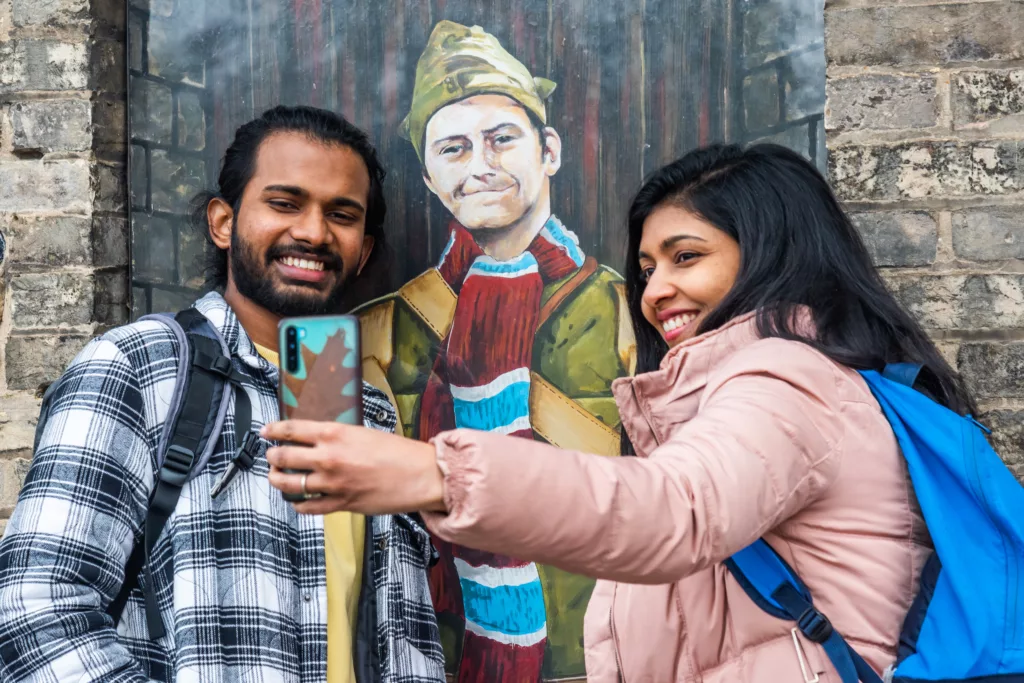
Dad’s Army Museum Thetford
Anyone who loves the nostalgic wartime BBC TV comedy Dad’s Army may well recognise the buildings of Thetford and countryside as the real life location of Warmington-on-Sea, the fictional town under the protection of Captain Mainwaring’s shambolic Home Guard. In its heyday the series regularly gained audiences of 18 million viewers and is still shown internationally and on Britbox.
Thetford’s Guildhall doubled as the Warmington-on-Sea town hall and many scenes were filmed in the town or surrounding countryside. Between 1968 and 1977 Captain Mainwaring, Corporal Jones, Private Pike, Wilson and other cast members were familiar faces in Thetford. If you stay at The Bell Inn, you might even get the same room as your favourite character, or at least one named after them. No need to dig through the archives to find the film locations, just book a guided walking tour round town or coach tour to explore even further afield. When the Dad’s Army Tours were launched they proved so popular that a Dad’s Army Museum was founded in the Old Fire Station. Fans will love all the memorabilia including Jones’s Butcher van, housed at the nearby Charles Burrell Museum. Have a photo taken in the Vicar’s chair or settle into 1940s inspired Marigold’s Tea Room for a nice cup of tea and wartime style cake – but no powdered egg! Or walk down the riverbank and take a picture beside a life size statue of Captain Mainwaring or a mural of Private Pike. Forgot your camera? You stupid boy!

For the Love of Butterflies
Free spirited Victorian adventurer Margaret Fountaine gave an extraordinary legacy to the Castle Museum in Norwich. On her death in 1940, cabinets of more than 22,000 butterflies were donated to the Museum but the astounding collection came with a condition. The Museum must also accept a sealed black metal box which could not be opened until 15th April 1978. When the box was at last unlocked, inside were twelve thick diaries of over a million words, photographs, pressed flowers, postcards and letters full of colourful detail about Margaret’s travels across the globe. She took her butterfly net to sixty countries during fifty years of questing for rare species, often travelling by bicycle, the trusty transport of early female liberation. Begun on her 16th birthday, her diary was kept faithfully until her death, reputedly of a heart attack on a mountain path near Port of Spain in Trinidad, butterfly net in hand.
Her candid memoir records the unconventional life and loves of an independent-minded woman, a pioneer of citizen science. From Turkey to Tibet, Syria to South Africa, she roamed the world often with a male companion, Khalil Neimy, who was 15 years younger than Margaret, and married but not to her. Romantic and courageous, she lived on her own terms, acknowledged by Rosie’s Plaques, a guerrilla art project celebrating the radical women of Norfolk. A permanent double case in the Castle Museum’s Natural History gallery displays her lifelong work.
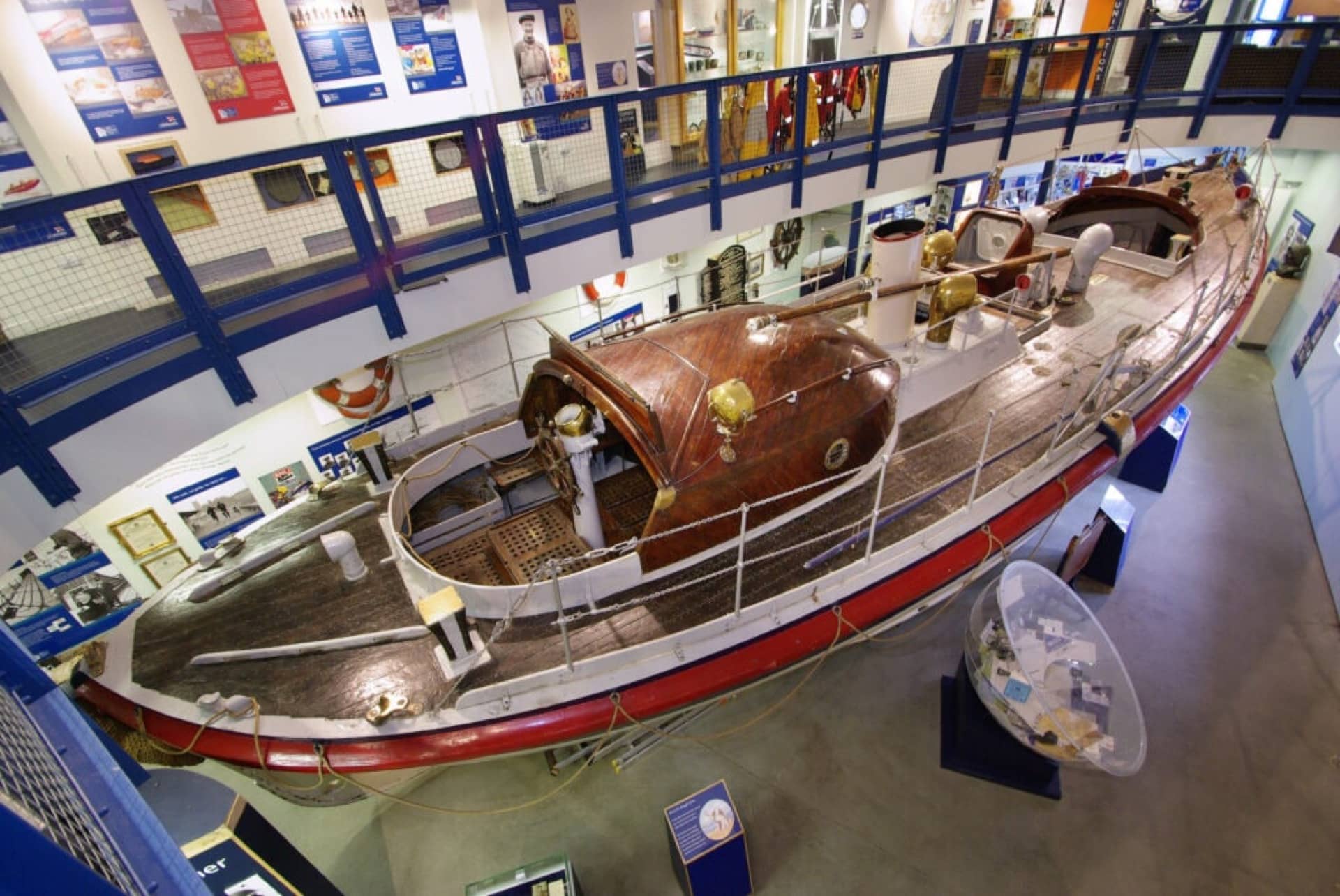
The Cromer lifeboatman, Henry Blogg
In every coastal community courageous souls set sail into terrifying storms when inland folk stay safe at home. Among the most famous of them all is Henry Blogg, Coxswain of the Cromer Lifeboat. By trade this modest, quiet-living fellow was a crab fisherman. In summer he rented out deck chairs and beach huts. But it was in rougher weather he made his name as ‘One of the Bravest Men who Ever Lived’.
He won the RNLI gold medal for conspicuous gallantry 3 times and the silver medal 4 times, plus the George Cross for general war service and a British Empire Medal, making him the most decorated lifeboatman in RNLI history. A national hero, commended for remarkable leadership, he celebrated the ‘dogged tenacity’ of his crew and kept the medals in his sideboard, rarely worn.
A lifeboatman since 1909, his first medals were won in 1917 when the Cromer’s lifeboat, Louisa Heartwell, launched 4 times in a relentless storm, to rescue 22 crew onboard the Pyrin, a Greek vessel. Looking forward to bowls of hot soup and a good rest after 14 hours at sea, they learned a Swedish ship Fernabo, had been blown in two by a floating mine. Rowing out more 3 times, it took another 24 hours to save the the stricken men.
By the time Henry retired aged 74 after 53 years of service, he’d saved 873 lives.
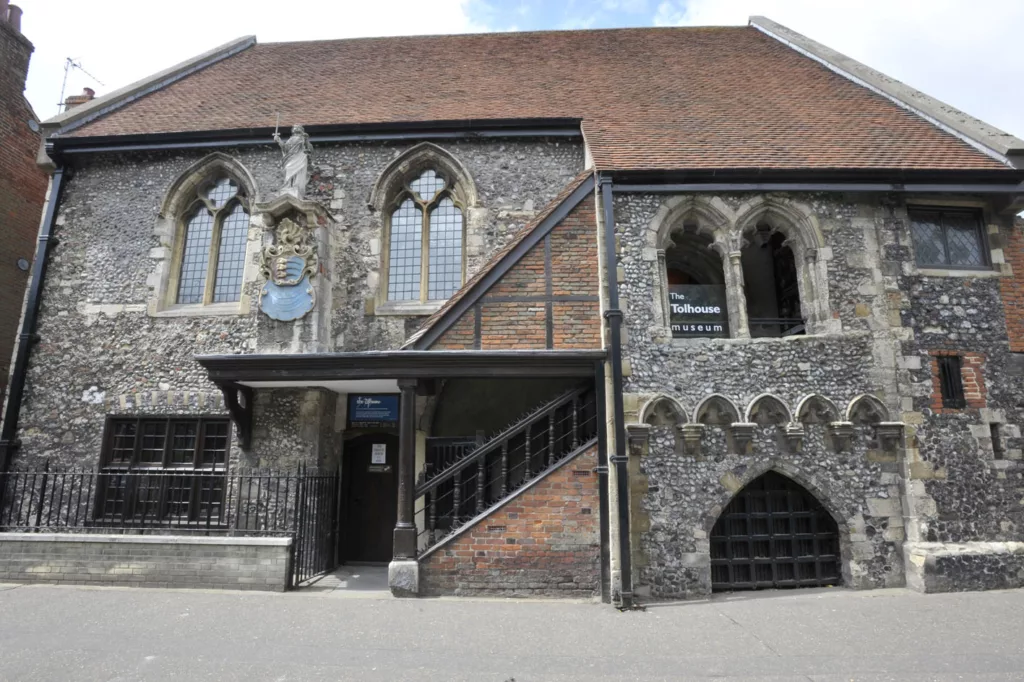
The Tolhouse Gaol
A few minutes walk from Great Yarmouth’s historic South Quay there’s a building with an eclectic past. Strangely out of place in the modern streets, Tolhouse Gaol has stood in the coastal town for around 800 years, home to a long history of desperate men and women.
Originally a rich 12th century merchant’s house, it was built to impress. The robust stone walls, carved doorways and arched windows tell a story of the owner’s success and status. Over the years it passed into the hands of the the town administrators, transforming into one of Great Yarmouth’s most important civic buildings and one of the oldest prisons in the country. It was first used as a courtroom, then a town gaol complete with the notorious ‘hold’, as the miserable dungeon was known. Its walls have borne witness to riots and rebellions and heard the despairing pleas of those accused of witchcraft, piracy, theft, smuggling and murder. After a turn as the local police station, Tolhouse Gaol became a museum in 1880, surviving two bomb blasts during the Second World War.
Today the Tolhouse Gaol tells the hair-raising story of crime and punishment through the ages in Great Yarmouth. It’s normally closed for the winter, but its unique exterior is still worth a visit and out-of-season Yarmouth is wonderfully atmospheric for artists and photographers. And if you’re looking to hire an unusual heritage venue full of character and stories, definitely consider booking the Tolhouse Gaol.
Build your own itinerary
If you fancy creating your own itinerary for a day trip to Norfolk or a longer visit, it couldn’t be simpler. Just go to Search Activities and select from our wide range of free and paid-for experiences, saving any that capture your imagination with the click of a button.
Once you’ve finished, you’ll find all the information stored in My Favourite, where you can drag and drop activities to create your own day-by-day itinerary! You can download this to a calendar and even share it with friends.
